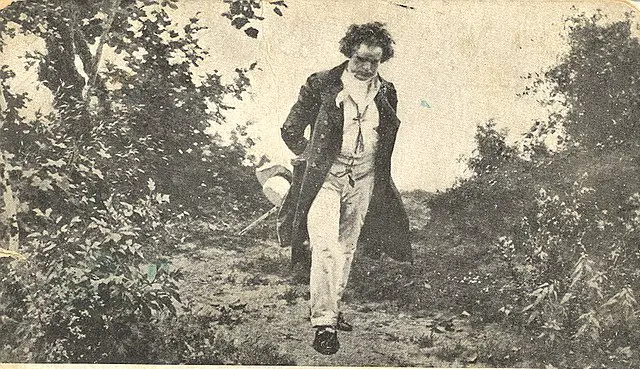Imagine pouring your soul into a symphony you can’t even hear. That was Beethoven. But he didn’t just suffer in silence. He hacked his own skull to feel the music.
Silence, Then Genius
By the time he was in his early 30s, Ludwig van Beethoven began to go deaf. For a composer, that sounds like the cruelest twist fate could serve up. You’d think the music would stop right there. But instead? Some of his greatest works came after the silence.
How?
Ludwig van Beethoven figured out a way to feel sound, through his bones.
The Body as an Instrument
Bone conduction isn’t science fiction. It’s exactly what it sounds like: vibrations traveling through the bones of your skull to reach your inner ear. That’s how we all hear ourselves speak, our voices sound deeper to us than on recordings because we’re hearing through both air and bone.
Beethoven didn’t have YouTube tutorials or a tech startup guiding him. He reportedly clamped a wooden rod between his teeth and rested the other end on his piano. When he played a note, the vibrations traveled up through his jawbone into his skull. He felt the music. Not quite the same as hearing it, but close enough to compose with soul-crushing intensity.
The guy literally bit his piano to bring symphonies to life.
Deafness Didn’t Mean Defeat
Let’s be honest. Most of us would crumble. Imagine losing the one thing that defines you, your career, your identity, and still pushing forward. That’s what Beethoven did. Not only did he continue composing, he got better.
His Ninth Symphony, arguably his most famous, was written when he was almost completely deaf. At the premiere, he had to be turned around to see the audience applauding. He couldn’t hear the thunder of their cheers.
But you know what? They heard him.
A Relatable Kind of Ingenuity
This wasn’t some inaccessible genius moment. It was scrappy. It was desperate. It was human. Beethoven wasn’t waiting for a cure. He didn’t mope in the corner. He adapted, messily and inventively.
You ever use your phone flashlight to fix something under the sink? Or jab a paperclip into a stuck drawer? Same energy.
Beethoven just applied that DIY spirit to something a little more complex: symphonic masterpieces.
The Music Beneath the Music
What’s wild is that bone conduction is now used in hearing aids and military tech. There are even bone-conduction headphones that let you hear music while keeping your ears free. Beethoven was centuries ahead, building a one-man prototype with wood, teeth, and sheer nerve.
And it worked. Not perfectly. But enough to keep him connected to the thing he loved most. Enough to finish what he started.
There’s something almost rebellious about that. Like, yeah, life dealt him silence, but he composed noise anyway.
Not a Miracle—A Mindset
The story of Beethoven’s bone-conduction hack isn’t just about music or biology. It’s about resilience. About figuring stuff out when nothing works like it used to.
And maybe that’s what sticks with us today. It’s not the technical details that move us. It’s the image of a man, hunched over a piano, holding a stick in his teeth, feeling every vibration, refusing to let silence win.
If that’s not metal, I don’t know what is.
Sources:
1. ludwig-van.com “Why did Beethoven put a stick in his mouth?”
2. Feeling the Music- Beethoven’s deafness and the Symphony of Innovation
3. Britannica – Beethoven’s Final Years

